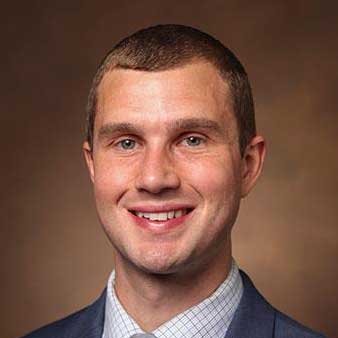Prepping for a race? Here’s how to safely build your mileage to reach the finishing line and avoid running injuries.
Running is a great do-anywhere exercise that requires little equipment beyond a pair of proper shoes. If you are new to running, want to up your weekly mileage or plan to train for a longer race distance, we have five best practices that will help you avoid running injuries so you can enjoy its many benefits for years to come.
First, you can put myths to rest that running in general — or running long distances — is bad for your health. Science says otherwise. A study published in the Journal of the American College of Cardiology found that training for and completing a marathon reduces central blood pressure and aortic stiffness, translating to a four-year reduction in cardiovascular age. And a study published in Clinical Rheumatology found that running did not increase knee pain or structural progression of knee osteoarthritis. Marathon running may even improve some knee damage, according to a study in the British Medical Journal.
“I think running a marathon is a great idea,” said Stephen Schaaf, M.D., of Vanderbilt University Medical Center. “Not only can it be fun, but it can also have a lot of fitness and health benefits.”
Schaaf provided the following training guidelines for avoiding injuries from running:
1. Start your training early.
Allow enough time in your training plan to increase your mileage slowly, rather than rushing to build it closer to race time. Download a sample race plan from an app or follow a trusted running guide. But allow for life to get in the way, too. You might get a cold or injury and require a few days off, family plans might impact your regular training schedule or something else may come up. “A good rule of thumb,” Schaaf said, “is that you shouldn’t increase your mileage by more than 10 percent per week.” For a longer distance race, you’ll also need to allot time to taper down your mileage. Tapering allows for running on fresher and healthier legs come race day.
2. Be mindful of running surfaces.
“I see a lot of patients who run on trails, and then all of a sudden they switch to the treadmill or they’re running on cement,” Schaaf said. “Try to be consistent with whatever terrain matches the marathon that you’re running.” Also, watch out for sloped surfaces. Many roadways are cambered to help with drainage, but the uneven terrain can place excess stress on tendons, ligaments, bones and joints.
3. Wear proper footwear.
Avoid running injuries by making sure you’re wearing the right running shoes. Schaaf recommends a shoe with adequate heel height and shock absorption. Your local running gear store can help you find the best fit based on your foot mechanics. Changing shoes before they wear down is also important. “A general rule to follow,” Schaaf said, “is to replace your running shoes about every 300 miles. Running with shoes that have developed an uneven wear pattern can lead to injury.
4. Prioritize resistance training.
Engaging in a resistance training program at least twice a week as part of your training routine not only builds leg strength and muscular endurance but can also help to correct musculoskeletal imbalances that could contribute to injury, Schaaf explained.
5. Seek medical attention when needed.
If you have any concerns about musculoskeletal health while training, see a sports medicine provider to get evaluated, Schaaf said. Typical muscle soreness and stiffness from exertion will crop up, especially while increasing mileage in preparation for a half or full marathon or if you’re new to running. But if you develop a nagging discomfort, make sure to get it evaluated so that it doesn’t progress into a serious injury that prevents you from reaching your goal.

The Vanderbilt Spine Center treats patients from across the Southeast for back pain, sciatica, whiplash and other conditions of the spine, offering a full range of treatments including non-surgical options. If surgery is necessary, the Vanderbilt Spine Center team provides an extraordinary level of experience and expertise for each patient’s needs. For more information, click here or call 615-875-5100.


